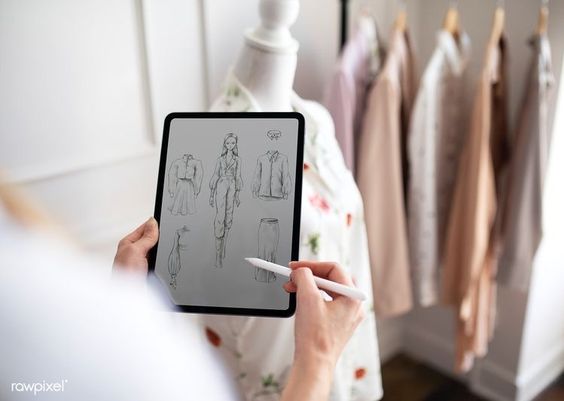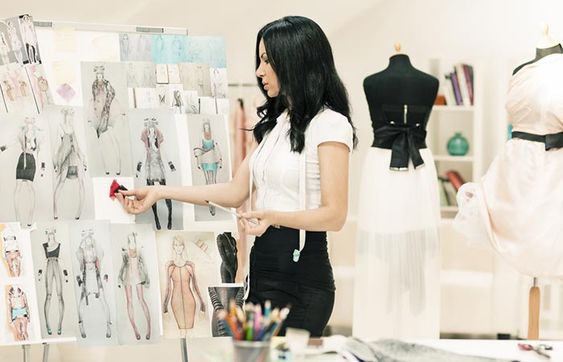How to Choose the Best Career Path – Fashion/Interior Design
Design Career Paths: Choosing Between Fashion, Interior, and Commercial Design A career in design offers an exciting mix of creativity and professional growth. Whether you’re drawn to the elegance of fashion design, intrigued by the functional artistry of interior design, or captivated by the strategic aspects of commercial design, each field offers unique opportunities. Choosing the right path begins with understanding the skills and education required for each discipline. At our institute, we offer comprehensive programs in fashion designing and interior design, tailored to prepare students for thriving careers in these fields. Understanding Design Careers Design careers are as diverse as the creative minds pursuing them. Each path requires a blend of imagination, technical knowledge, and industry-specific skills. If you’re a student searching for fashion designing courses or interior design programs near me, understanding these distinctions can help you make an informed decision. Fashion Design: A World of Creative Possibilities Fashion designing is one of the most dynamic and innovative career options for creative individuals. This field allows students to channel their passion for textiles, trends, and artistry into wearable creations. Phoenix Institute, Bhilai offers three program levels to cater to varying aspirations: Fashion designing is particularly lucrative in regions like Maharashtra, Chhattisgarh and Madhya Pradesh, where students can explore opportunities blending traditional crafts with contemporary designs. Interior Design: Crafting Functional and Beautiful Spaces Interior design combines creativity with technical expertise to shape spaces that are both practical and visually appealing. Whether it’s a small bedroom interior design or a sprawling office layout, interior designers use spatial planning, colour theory, and material knowledge to bring concepts to life. Our interior design programs at Phoenix Institute, Bhilai emphasize hands-on learning, equipping students with skills such as: The demand for interior designers is steadily increasing, especially in growing regions like Chhattisgarh, Madhya Pradesh, Maharashtra, Odisha and Jharkhand, making it a promising career for students passionate about design. Commercial Design: Merging Creativity and Business The commercial design offers a blend of artistic creativity and business strategy, focusing on spaces that influence customer behaviour and brand perception. It includes retail store design, visual merchandising, and other branding environments. Students pursuing this specialization learn to create cohesive designs that align with a company’s identity while delivering functional, attractive spaces. This field is ideal for students interested in merging artistic expression with entrepreneurial goals. Core Skills Every Designer Needs Regardless of the design field you choose, certain skills are essential for success: Our programs at Phoenix Institute, Bhilai integrate these skills into the curriculum, ensuring students graduate ready to meet industry demands. Educational Pathways in Design At our institute, students can choose from a variety of programs tailored to their interests and career goals: These structured pathways ensure students develop both the theoretical knowledge and practical expertise needed to excel in their chosen fields. Practical Training and Industry Experience Hands-on experience is a vital part of design education at Phoenix Institute, Bhilai. Our programs incorporate practical projects and internships to prepare students for real-world challenges. Fashion design students work on creating collections, while interior design students develop full-scale solutions for residential or commercial spaces. This approach ensures graduates leave with professional portfolios showcasing their creativity and technical skills. Specializations in Design Careers Design careers offer numerous avenues for specialization: Specializing allows students to align their skills with market demands and their interests. Future Trends in Design The design industry is constantly evolving, driven by technological advancements and changing consumer preferences. Key trends include: Our programs at Phoenix Institute, Bhilai ensure students are prepared for these future trends while maintaining strong foundational skills training. Building a Portfolio: Showcasing Your Talent A professional portfolio is essential for any designer, acting as a visual resume that demonstrates creativity and technical expertise. Tips for building a standout portfolio include: Networking and Professional Growth Networking is key to success in design careers. Phoenix Institute, Bhilai facilitates connections with industry leaders through: Conclusion Choosing between fashion, interior, and commercial design is an exciting decision that sets the stage for your creative future. Whether you’re drawn to designing clothing or transforming spaces, Phoenix Institute, Bhilai provides the education and hands-on experience needed to thrive in the design world. Start your journey today by exploring fashion design courses or interior design programs on Google. With the right guidance, your passion for design can become a fulfilling career. As the best design institute in Chhattisgarh, Phoenix Institute offers specialized programs that help students channel their creativity and prepare for successful careers in design.
How to Choose the Best Career Path – Fashion/Interior Design Read More »



